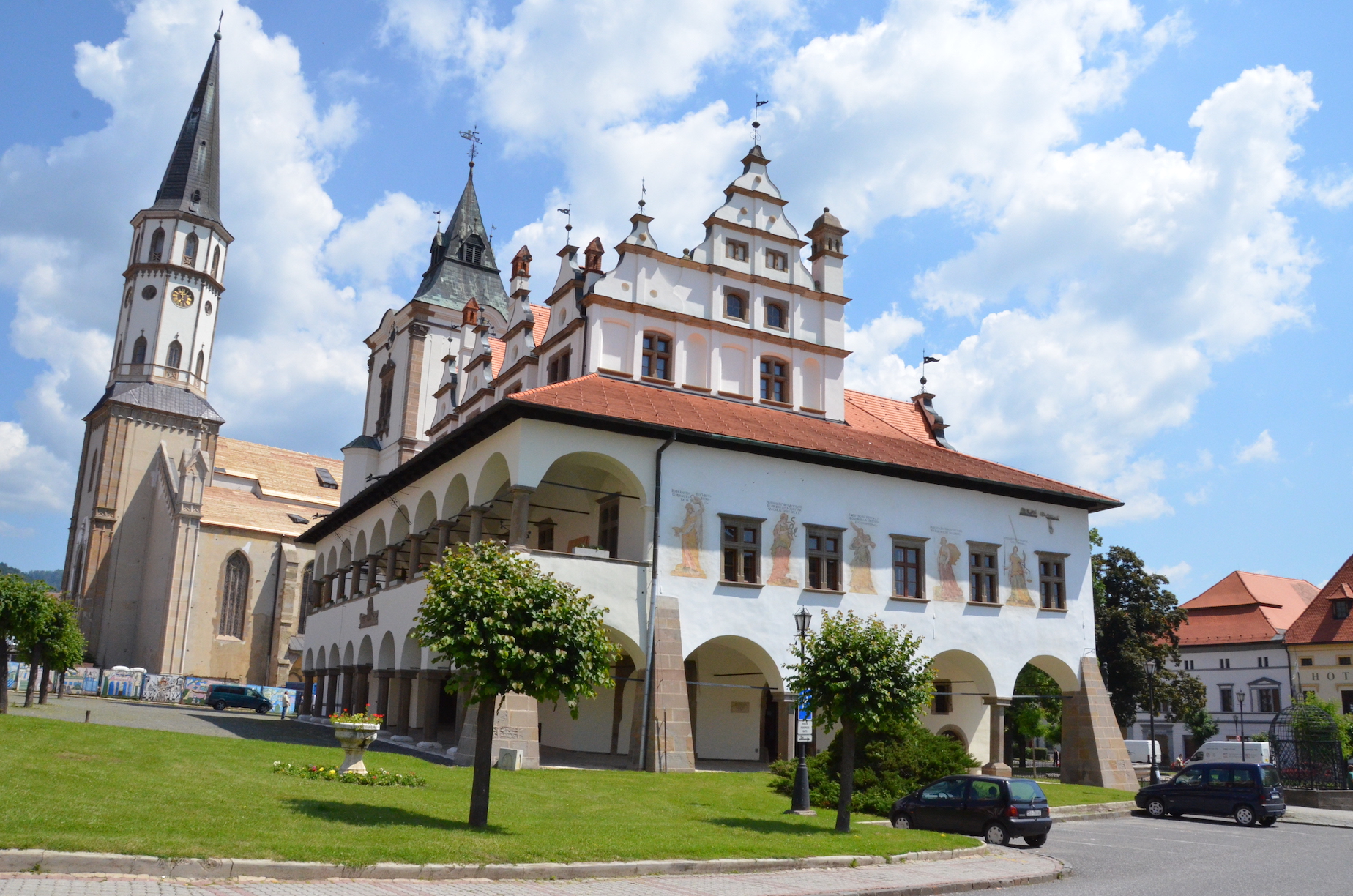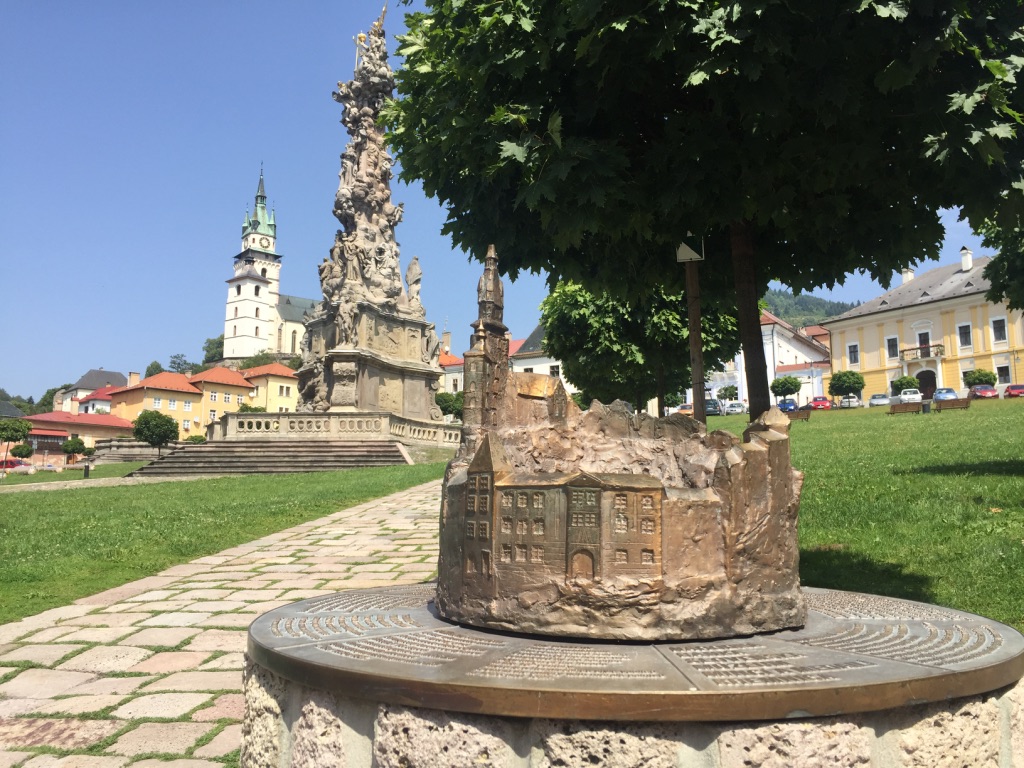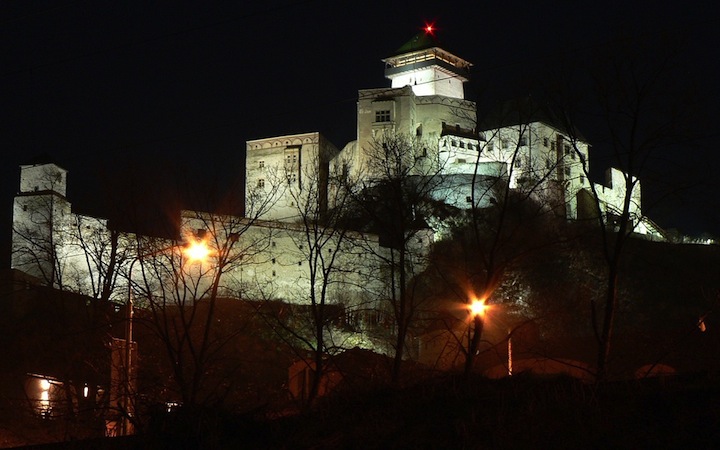Medieval Towns of Slovakia
What is typical are spectacular squares in different shapes and narrow cobble-stone streets. A medieval town was usually surrounded by a sophisticated fortification system consisting of defensive walls, bastions, entrance gates with draw bridges, guards, and usually a water moat all around.
Well, nowadays, such a defensive system lost its original character (to protect the inner city and its inhabitants against the enemies) and there are no more guards or draw bridges over water moats.

Most of them were demolished at the end of the 18th century (1775-78 Maria Theresia, Austrian empress & Hungarian Queen ordered to demolish the city walls in Bratislava, see picture above), but you still can see them almost intact in 2 Slovak towns, while in the others there are now just remnants.
In Slovakia, most of the written evidence about the town establishments we have from the first half of the 13th century.
After the Tartar invasion (in the years 1241-1242) to upper Hungary (present-day Slovakia), the Hungarian king Bela IV. ordered to build the stone castles.
Later, at the beginning of the 14th century, when the towns became prosperous, they started building defensive walls. Later, they re-built them and made them higher in the 16th century, after the catastrophic Battle of Mohacs in 1526 where the winners were the Turks who started besieging and conquering Hungary and other countries.
There are 7 medieval towns we have mentioned here which we visit regularly on our tours as we consider them very special, picturesque and charming. Some of them are famous and even listed in UNESCO World Heritage List (Bardejov, Levoca), others are less visited, but charming such as Kremnica, Skalica, Trnava, Trencin. And Kosice, the 2nd largest Slovak city, is fascinating and the heart of the old town – the square according to some of our travelers is the most beautiful, green and lively. And I completely agree.

BARDEJOV town – undoubtedly absolutely best-preserved medieval town with still-standing original defensive walls. Nowadays located out-of-the-beaten track, hidden in the northeastern Slovakia, but during the medieval times, there was an important ancient trade route going through this town, connecting the Baltic sea (the North) with the Black sea (the South).
The first written mention comes from 1241. It was king Louis I. from Anjou dynasty who in 1352 ordered to build the fortification walls around the town. A few years later, in 1376, he granted the town another important privilege – Free Royal Town. Also, other kings such as Sigismund of Luxemburg and Matthias Corvinus supported Bardejov, which became a very developed and prosperous Hungarian town with around 50 guilds present. Even nowadays, almost the whole historical square is surrounded by the fortification walls (many parts are original from the 14th century, some parts are already new but on original foundations).
What do we recommend? A slow-paced stroll around the defensive walls, admire the different types of bastions, and visit the Town’s square surrounded by 3 sides by fairy-tale houses. The Church of St. Egidius is a must. Climb the church tower too to get the stunning views and enter the museum of town’s history in a stunning Renaissance building (former town hall). Some of my travelers described this town with all gems which it has to offer as a Text Book of history.
Once in Bardejov, don’t forget to discover the area. Bardejov Spa, located only a few minutes by car, famous for healing mineral water tried by Maria Louisa (the wife of Napoleon Bonaparte), the Russian Tsar Alexander I, and also the Austrian empress Elisabeth.
Worth to visit is also an open-air museum where you can admire 19th-century houses from different villages (removed and replaced in this museum), such as peasant’s house, mayor’s house, wooden church, or stalls.

Another gem is LEVOCA town, firstly mentioned as a settlement in 1249, located on a significant ancient trade route Via Magna, became a Free Royal Town in 1323. Similarly, as Bardejov, it is the town with most of the original still standing defensive walls and city gates. You can admire them by walking around.
The first thing which comes to my mind when I hear Levoca is the famous woodcarver Master Paul of Levoca. Start your Levoca visit with visiting roman-catholic parish church of St. James and see the masterpiece from Master Paul – the world’s largest late gothic wooden wing altar, 18.6 meters high and 6 meters wide. It is truly amazing. (Of course, there is much more waiting for you to discover in this church, such as 14th-century frescoes on the wall and many side altars too).
Other sights to admire – the authentic burgher houses on the square, cage of Shame, Renaissance building (former town hall), Master Paul’s workshop, Thurzo’s house.
If you have more time, take a walk up to the top of Marianska Hill. Levoca is the Slovak oldest and most famous pilgrimage place where thousands of pilgrims from different countries each July walk and pray. The biggest pilgrimage gathering was here in 1995, in the presence of the pope John Paul II. More than 650 000 pilgrims came here.

KREMNICA town, one of the most significant central Slovakian mining towns where you can admire a castle with fortification walls.
Of course, Kremnica has a lot more than some remnants of the walls and a castle, it is nicknamed as a Golden town and became famous in the 14th century for gold production, actually for the most gold extracted in the whole Kingdom of Hungary. King Charles Robert from Anjou granted this town privileges and established here a mint, soon afterward minting of Kremnica’s Ducats began. They were used as a valuable means of payment until 1919.
What is worth to visit? Of course, the Mint Museum and a stroll around the square.
Did you know that in the surrounding Kremnica hills – there is a symbolical middle of Europe, a monument near the church of St. John the Baptist near Kremnicke Bane village.

SKALICA town, this charming little town close to the Czech borders, nicknamed also as the Pearl of the Zahorie region, also has some parts of the former fortification system. And 12th century Rotunda.
Skalica was firstly mentioned in the year 1256. In 1372, the king Luis I. granted Skalica privilege of the Free Royal Town, later king Sigismund of Luxemburg granted other privileges and Skalica became an important commercial, cultural and spiritual center.
What to visit? Gothic church of St. Michael, evangelical church, Franciscan monastery, Jesuit church and monastery, and Synagogue is definitely recommended. From the more recent history, admire the so-called cultural house on the square, built in the Secession style in 1905 according to plans of famous Slovak architect Dusan Jurkovic.
Once in Skalica, try the specialties of this region – the famous red wine called Skalicky Rubin and the sweet delicacy Skalicky Trdelnik cake.

TRNAVA town, has 11 Roman-Catholic churches, an Evangelical church, and a Synagogue. The most important decree comes from king Bela IV. from 1238 when he granted this town the privileges of the Free Royal Town and town started to prosper.
This was the reason why they started building the first fortification walls, bastions and gates in the middle of the 13th century, later in the 14th century they started using bricks. In total it had 3km with 35 towers, the height of the walls was 10meters and thickness up to 2meters 30cm. As Trnava was for almost 300 years a significant cultural and spiritual center of Hungary (after 1543 when the Turks conquered Esztergom town and archbishop moved here).
It is also a great idea to visit the area around. What about Smolenice castle (re-built by its last owner from the famous Palfy dynasty) in Small Carpathians or a classist mansion house in Dolna Krupa, a place where world-famous composers Ludwig van Beethoven composed Moonlight Sonata.
City of KOSICE – firstly mentioned as Villa Cassa in 1230, from here the name Cassovia, German Kaschau, Hungarian Kassa, and later, Slovak name Kosice.
Tartar invasion devastated the town, however, soon afterward a skillful craftsmen & tradesmen especially from the Saxony region (Germany) started coming and settling down. The business started being prosperous and the town was surrounded by a very sophisticated fortification system with two entrance gates, several bastions, and several water moats.
Kosice town lied on an important trade route (similar as Bardejov, Presov, Levoca) connecting the Baltic and Black sea. It was a meeting point of rich and influential businessmen from the whole Europe.
Kosice became a Free Royal Town in 1342 and as the first town in Europe, on 7 May 1369, they got the first coat of arms. (May 7 is nowadays Day of City of Kosice).
What to enjoy? Stroll the square – it is a magical place with the largest gothic cathedral in Slovakia – St. Elisabeth Cathedral. Enter and enjoy. There are lovely green city parks, especially the one with a singing fountain is our favorite one. Discover more, little side streets, a famous lane of crafts (blacksmith, pottery workshop, and a lovely little café with home-made desserts). If you would like to see a short movie about the development of the city and its walls, go to Miklus’s museum.

TRENCIN town, always connected with one of the most powerful leaders, Matthew Czak of Trencin, nicknamed the Lord of Vah river and Tatra mountains who made from an existing castle a mighty never conquered fortress.
It is worth to mention the famous inscription on the rock – left here by Roman soldiers saying that in 179AD, there was a Roman military camp with approx. 855 soldiers. It is the easternmost evidence of the presence of the Romans on our territory. If you climb up to the castle, you can admire former fortification walls (still visible in some parts). In the past, there were several important visits of the kings, probably the most important one was in 1335, a meeting of the Hungarian king Charles Robert and his son Luis I. with the Czech king John of Luxemburg and the Polish famous king Kazimierz the Great. They negotiated a peace after many years of conflicts between Poland and Bohemia.
Trencin became a Free Royal town in 1412 (king Sigismund of Luxemburg).
As you can see, historically important and nowadays a perfect stop once you travel between Bratislava and Central Slovakia.
We hope you enjoyed reading about our Medieval towns of Slovakia.
Would you like to visit some of these towns and get the most out of your holiday? Simply have a look at
our offer of tours and trips in Slovakia
Thank you for sharing with your friends and keep reading our Travel Blogs. We travel constantly and bring you always the updated news.
Next week about the Beauty of National Parks in Slovakia. Tips from locals, Advice from experienced guides and much more. Stay with us 😉






